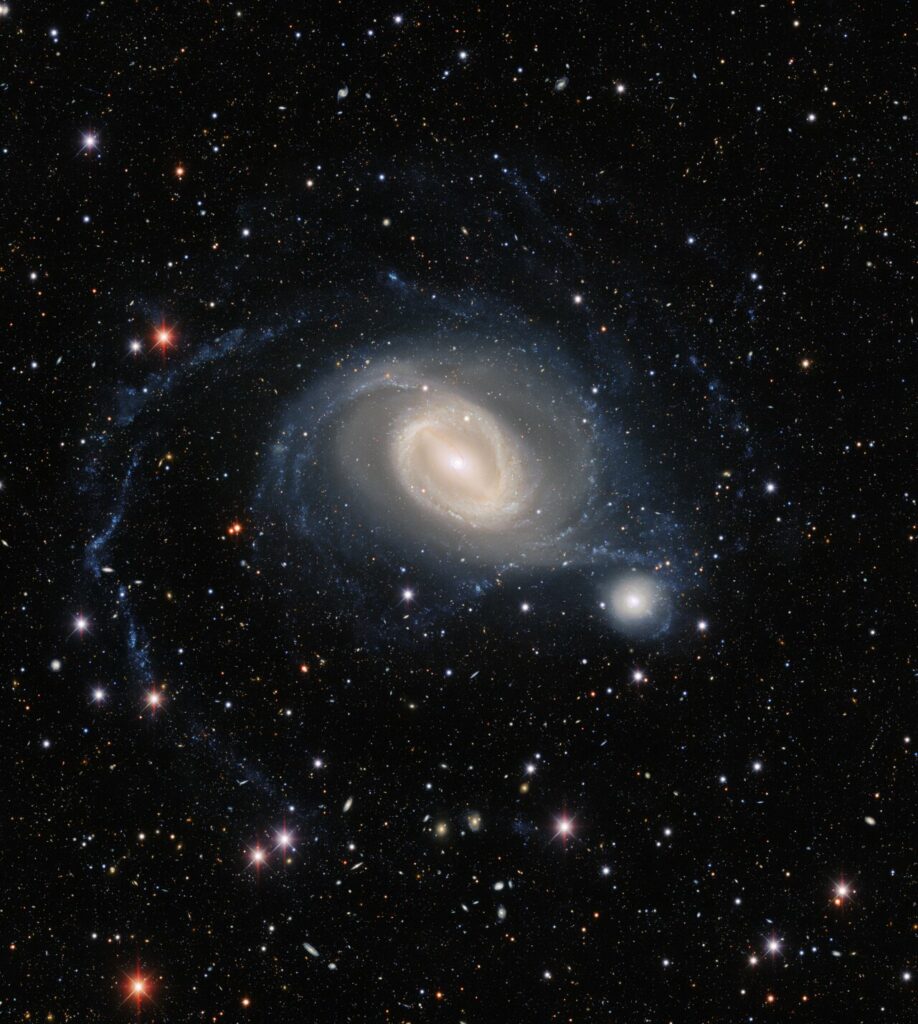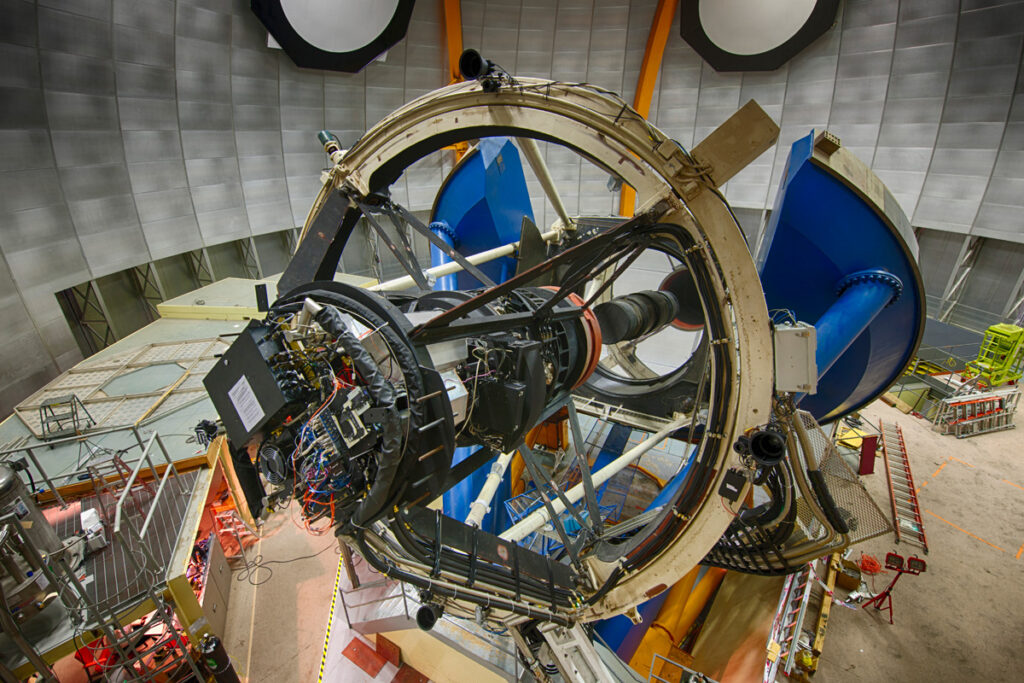The presented image was obtained using the Dark Energy Camera (DECam) installed on the 4-meter Victor Blanco Telescope at the Cerro Tololo Inter-American Observatory in Chile. It shows a pair of interacting galaxies NGC 1512 (left) and NGC 1510 (right).
Interacting galaxies NGC 1512 and NGC 1510
NGC 1512 and NGC 1510 are located at a distance of 60 million light years from Earth in the direction of the constellation Horologium. 400 million years ago, the galaxies swirled in a joint “dance”, which in the future would lead to their merging into a single object.

The DECam image demonstrates not only the complex internal structure of NGC 1512, but also the thin appendages extending from it, which envelop its smaller companion. This star bridge is the most obvious sign of the gravitational interaction of galaxies. It is also expressed in the increased rate of star formation inside NGC 1512 and NGC 1510, and the distortion of their shapes.
In addition to NGC 1512 and NGC 1510, the DECam image also includes stars of the Milky Way and more distant galaxies. The first can be distinguished from the second by the presence of characteristic “crosses”. These are diffraction rays, an optical effect often observed in the images of reflecting telescopes. It occurs due to the diffraction of the light flux on the extensions supporting the secondary mirror.
What is a Dark Energy Camera
The Dark Energy Camera is one of the most advanced astronomical instruments of our time. It collects the light reflected by the 4-meter mirror of the Victor Blanco telescope and passes it through its insides, including a meter-long corrective lens. It is then captured by a grid of 62 devices with extremely sensitive CCD-matrixes. They allow DECam to create detailed images of faint astronomical objects like NGC 1512 and NGC 1510.

DECam was created for the DES review carried out from 2013 to 2019. During the experiment, astronomers carried out mapping of hundreds of millions of galaxies and thousands of supernovae to detect thin patterns of the cosmic structure. This was required to obtain information about the nature of the mysterious dark energy that accelerates the expansion of the Universe. Today, DECam is still actively used by astronomers from all over the world, remaining at the forefront of science.
Earlier we wrote about a festive photo of the Hubble telescope, taken in honor of the 32nd anniversary of the telescope.
According to https://noirlab.edu
Follow us on Twitter to get the most interesting space news in time
https://twitter.com/ust_magazine

